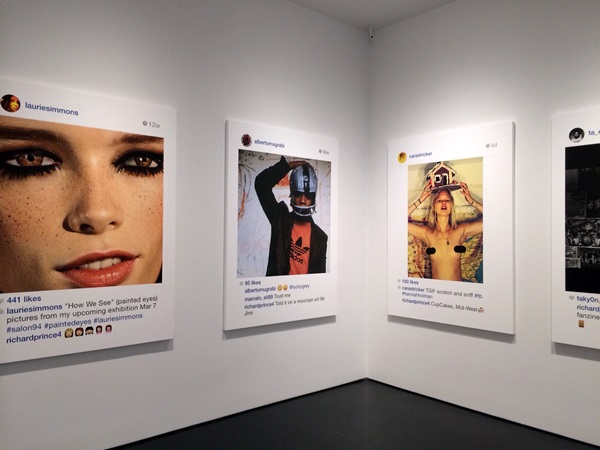An art market is a market that focuses on works of art.

Photo courtesy of Sotheby's
What Makes the Art Market Special
Unlike most industries, the art market is about something more than supply and demand.
It is about the cultural value of a work of art, but also about its overall monetary value, which takes into account its past and future value. In other words, it could be called a hybrid forecasting market.
The art market is unique in that the producer (the artist) does not necessarily create the work primarily for sale, and the buyer (the collector) does not fully know the future value of the work he or she is buying. Furthermore, the art market has traditionally been opaque, with private sales accounting for about half of all market transactions.
Auctions at famous auction houses such as Sotheby's and Christie's are held in spring and fall. In Japan, Shinwa Auction and others are well known. If you look at art works as financial products, you will need to watch the market over a fairly long span of time. Private sales are still held throughout the year, but unless there is a public announcement, the transactions do not affect the market.
Fluctuations in the financial markets can affect the art market, but conversely, the art market has not been particularly affected when the Dow Jones Industrial Average has fallen.

© Julian Cassady Photography
The Changeability of Value
In an art market that is prone to value fluctuations due to its own mechanisms, even works by world-renowned artists can undergo significant changes in value. For example, in the spring of 2008, a collector paid over $80 million for Jeff Koons' stainless steel "Rabbit. A year later, however, at Christie's and Sotheby's fall auctions in New York, only two of the four pieces offered by Koons sold well, and one did not sell at all. In 2011, Christie's sold one of Koons' balloon flower sculptures for $16.9 million.
Thus, even pieces that sell well for a time can lose value as new styles and ideas replace them. It does not necessarily increase in value incrementally over time.

© JEFF KOONS STUDIO
Primary and Secondary
The art market is divided into two categories: the primary market, where new works of art come to market for the first time, and the secondary market, which is for existing works of art that have been sold at least once in the past. Basically, the primary market is where a work of art comes directly from the artist to a collector or is bought and sold for the first time through a gallery. Secondary auctions are those where the work moves from collector to collector, or where the collector sells the work in an auction as described above.
The pieces sold at the primary auction go to the secondaries, and the price at the primary auction is directly related to the value at the secondaries.
The supply-demand relationship for works in the first place affects the secondaries more than the primaries. The reason for this is that there is no clear data for predictive analysis for new works, especially contemporary art, and it is difficult to evaluate works, i.e., they are more speculative. Promotion by galleries, dealers, consultants, and other agents, as well as collectors (trendsetters) working as alpha consumers, act on the valuation of works in the primary.
.jpg)
How to determine the value of art
As with blue-chip stocks, works by "blue-chip" or well-known artists are generally valued higher than those by unknown artists because it is very difficult to predict how works by unknown artists will sell, or whether they will sell at all.
The high barriers to market entry increase the scarcity of works entering the market. As a result, the price of each piece increases.
There is a perception of a somewhat "fixed " value of a work due to the existence of a limited number of artists and an inner scale to value them. This increases the predictability of the market, but the negative effect is a decrease in artistic diversity and fewer new collectors entering the market.
For this reason, it is of utmost importance for gallerists and art dealers to consider what types of artwork are currently in vogue before placing value on new artists. It is because of these concerns that gallerists set prices for new artists much lower than for established artists.
Market Transparency
Due to the global financial crisis of 2007-2012, the art market came under criticism for its lack of transparency, archaic valuation methods, and the market's own structure, which was seen as unethical. In response, a debate was held among art market players (gallerists, dealers, etc.) in 2009 for the proposition that the art market is less ethical than the stock market.
Particularly noteworthy in this debate was the mention of "chandelier auctions" as an ethically problematic practice. By "chandelier bidding," we mean both bidding by an auction house on behalf of a seller (a conflict of interest) and unidentified bidders who have no intention of buying but bid to drive up the price. The report states that these activities were able to take place because the auction house kept the bidder in the dark about the price at which it was prepared to sell.
In 2011, in response to criticism of the market's opacity and the counterargument that more transparency would ruin the market, The Art Newspaper, in collaboration with the Art Dealers Association of America, hosted the Art Industry Summit panel The Art Newspaper, in collaboration with the Art Dealers Association of America, hosted an Art Industry Summit panel discussion on the need for more transparency.
They discussed whether the market has built-in conflicts of interest, such as representing sellers with secret reserves or offering buyers an initial valuation of those works at the time of auction. There was also discussion of the issue of first and third guaranteed bids and whether sellers' reserves should be disclosed so that they do not bid on items they do not expect to purchase.
As the weaknesses of the art market (especially opacity and conflicts of interest) become better known, serious consideration of market regulation has begun among key market participants.
History of the Art Market
The late 1980s were a boom time for art auction houses. However, in the early 1990s, the market suddenly collapsed.
In 2001, the U.S. overtook the EU to become the largest art market in the world, with a global share of 47 percent; the second largest country, the U.K., has a global share of around 25 percent. France leads the market in continental Europe, while Hong Kong continues its dominance in Asia.
As of 2004, global art market sales were estimated at almost $1 billion; in 2007 auction sales reached a record $1 billion, boosted by speculative bidding for artists such asDamien Hirst,Jeff Koons, andRichard Prince! The auction was the largest of its kind in the world, with over $1.5 billion in sales.
The recent prosperity of the Chinese art market, both in the size of its domestic sales and the international importance of its buyers, coupled with the rich cultural heritage of art and antiques, has created a huge domestic market and ended the monopoly held by London and New York for over 50 years. Today, the Asian market is also very large.

© Damien Hirst and Science Ltd.

© Photo by Paddy Johnson